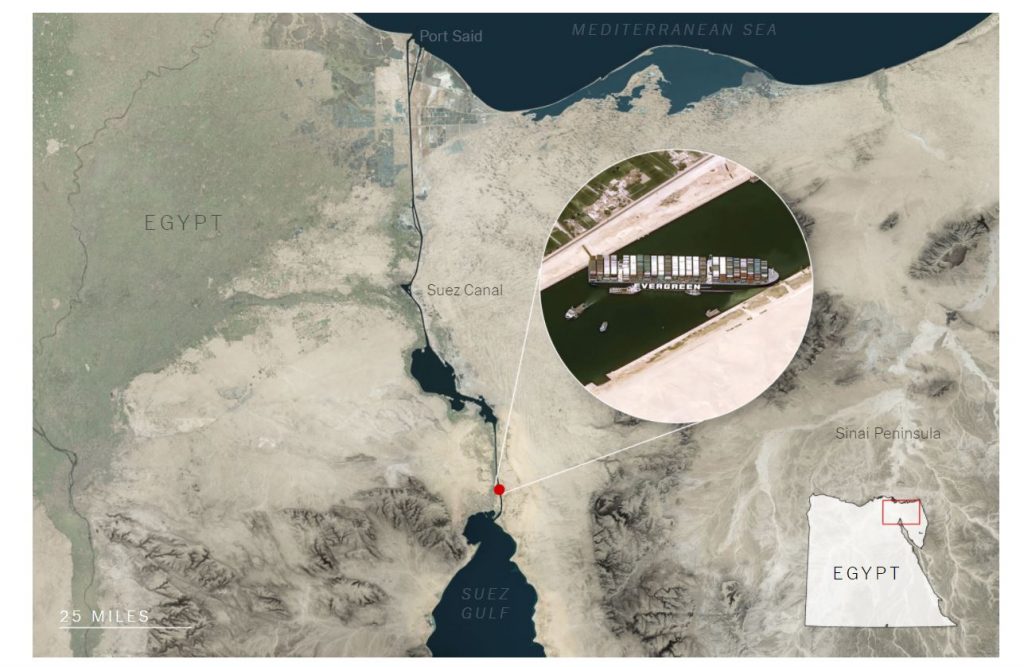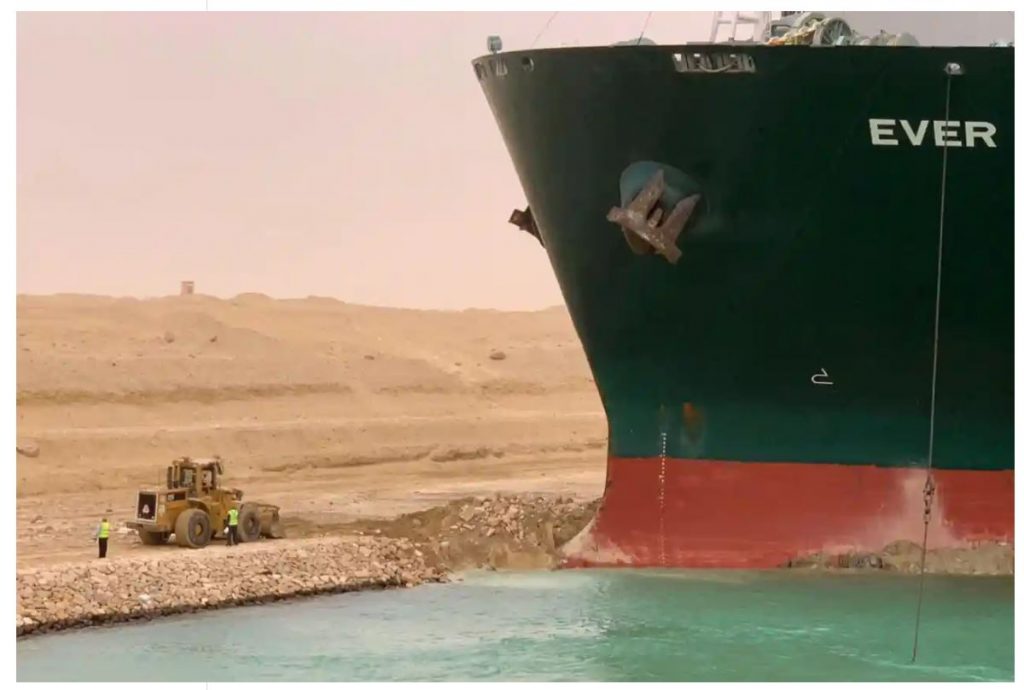On Tuesday 23rd of March the Ever Given cargo ship became stuck in the Suez Canal in Egypt which is one of the biggest and most important shipping routes in the world. About 12% of global trade passes through the Suez Canal. This is because the Canal connects the Mediterranean Sea to the Red Sea and represents the shortest sea route between Asia and Europe.
This blockage has resulted in a slowing down of global trade as it halted the movement of over 200 cargo vessels in the area trying to pass through the Canal. With the vessel finally re-floated and the blockage cleared, I thought I would use this opportunity to explore what I believe to be the most interesting part of this situation- how shipping impacts international trade and globalisation as a whole.
What is globalisation
Before I get into the role that shipping and containers play (and have played) in the development of the global economy, I’m first going to take a closer look at what globalisation is. Globalisation refers to rapidly growing interdependence of countries as a result of an increased integration of trade, people, finance, and ideas into one global marketplace.
Globalisation is a complex and layered process that involves many people, institutions, and networks. It plays a major role in, and impacts many aspects of, the social, economic, and cultural aspects of society and has drastically impacted the way in which we interact with the world and each other.
Through improvements in communication and transportation technology, as well as a massive increase in trade and cultural exchange, the world is becoming more and more connected. This has resulted in the creation of multinational companies with subsidiaries in multiple countries, free movement of goods, services, and capital, and an overall increase in international trade and cross-border investment.
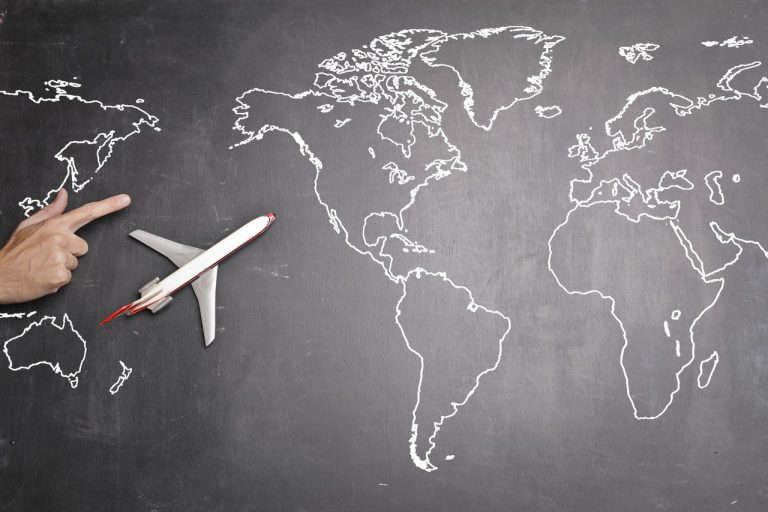
Globalisation is breaking down boundaries between people and nations and is creating a new way of living and looking at the world. There are new boundaries being created, however, such as those against economic migrants and the importation of goods in to the first world from the third world. This means that while globalisation is making the world more connected, it is also making it more unequal as the richer, ‘developed’ countries are reaping the benefits of the things created by, and the work done by, people in poorer, less ‘developed’ places.
Globalisation is a part of capitalist production and, through innovations in technology and transport, results in a restructuring of capitalist activity and the restructuring of space. Freedom of trade, transportation improvements, improvements in communication technology (such as the internet), and higher labour availability and cheaper labour costs offered by countries such as India have facilitated the rapid rise and growth of globalisation.
Why shipping is important
The life we live today, and the things we are able to have, are directly linked to the global increase in shipping, yet most people are unaware of this or know where their stuff comes from or how it gets to them. Ships carry on average 96 percent of trade worldwide and are responsible for the global transfer of goods from one place to another.
One technology that has greatly changed and impacted international trade is the creation of the container. The container has become an agent of production and distribution and has led to numerous changes in local and global economies, labour practices, and transport geographies.
“The technological revolution of containerization has gradually produced new forms of relationships among countries, regions and port cities, backed by a continuous pressure on transport costs” (Ducruet and Notteboom, 2012, p.396). Containerisation has reshaped global shipping and supply chain practices and has driven modern economic globalisation.
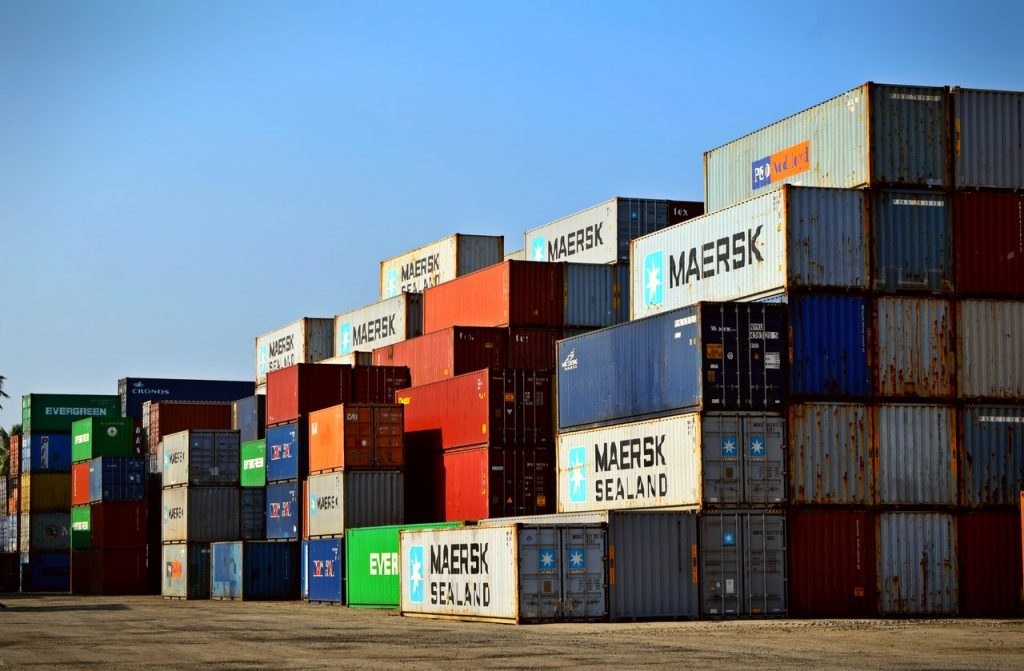
The development and expansion of international trade, as well as technological advancements, has resulted in an increased demand for marine transport services with maritime trade accounting for approximately two thirds of merchandise trade. The creation of large cargo ships such as the Ever Given have greatly reduced the cost of transporting goods between countries. Due to economies of scale, the overall cost per item decreases when operating on such a large scale and products are now able to be transported extremely quickly and in bulk.
Continued economic progress has resulted in an increase in global trading activities leading to the development of larger and faster shipping vessels being built (such as the Ever Given cargo vessel which is 400m long and 200,000 tons). As boats continue to get bigger and more efficient, globalisation will continue to exist, unless impacted by laws or lawmakers making decisions that can slow it down.
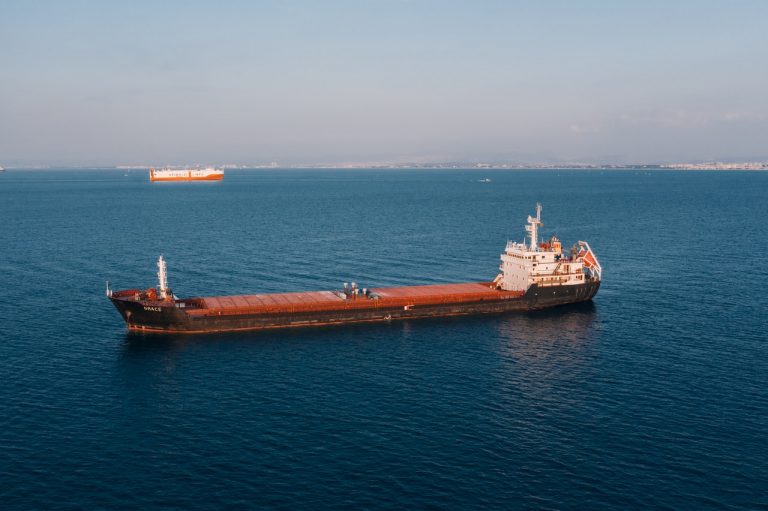
How shipping impacts globalisation and global trade
Globalisation, and the benefits that are being reaped from it, is completely pervasive throughout modern society and any interruption to the global supply chain, such as what is currently occurring in the Suez Canal, affects many people, businesses, and countries.
Global trade occurs as a result of an uneven distribution of resources and materials across the globe. No country has everything so they, therefore, need to trade with each other in order to get the things they need. Cargo ships and the shipping industry have made this quicker and easier and have facilitated the expansion of a global economy.
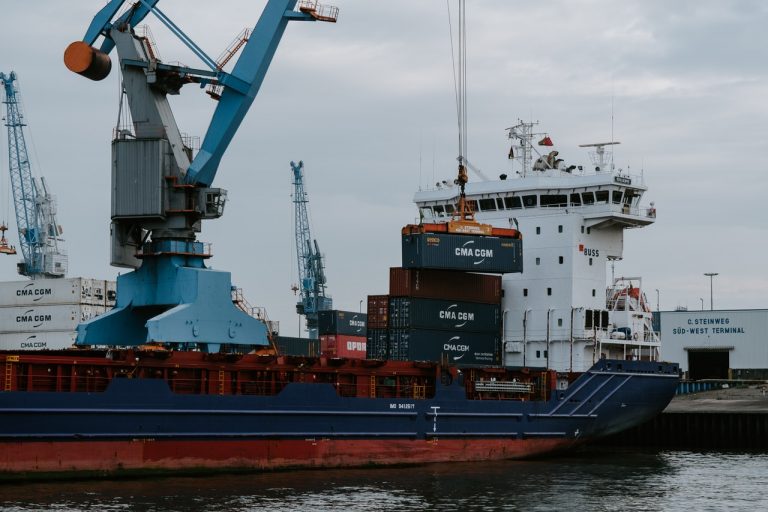
In terms of the Suez Canal blockage, its impact on global trade has been intense despite only being blocked for about a week. As stated earlier, about 12% of global trade as well as around 8% of liquified natural gas and around one million barrels of oil pass through the canal each day.
It has been reported that the Suez Canal’s revenue since the blockage occurred was suffering loses of around $14-$15 million for each day. Additionally, the blockage is holding up an estimated $9.6 billion of trade along the waterway per day (over 160 vessels are waiting to pass through the Canal currently).
Benefits of shipping
The container is one of the most important technological advancements in the last century and it has impacted and benefited the world and global economy in many ways. Products are able to be made and transported for a much lower price due to the increased mobility afforded by shipping and globalisation.
The low transport costs of shipping have a ripple effect along the supply chain making it both cheaper to produce the products and reduces the end price for the customer. Cargo ships are also able to move a large amount of goods at one time quickly from point A to B. This makes shipping even more efficient and works to lower prices even further.
Drawbacks of shipping
While the container, and shipping in general, has created many benefits and has connected the world through globalisation, there are many drawbacks that occur as a result.
Environmental issues
Shipping is a massive industry that facilitates global trade throughout the entire world. Like other large industries, there is a lot of waste and pollution that is produced by the shipping industry and is detrimental to the environment. While shipping is one of the most carbon efficient methods of transporting products, especially when compared to airplanes, they still produce a large number of pollutants.
It is very rare for every container to be full when being transported. This means that empty space is being transported around the globe and there is an associated environmental cost for each of these pointless journeys such as the use of high polluting fuel, the production of ballast, and the large amount of carbon dioxide emitted as a result.
Shipping also impacts, and contributes to, climate change through the emission of black carbon as a direct result of the combustion of marine fuel. Black carbon is responsible for 21% of the CO2-equivalent emissions from ships which makes it the second largest impact on climate change by ships after carbon dioxide.
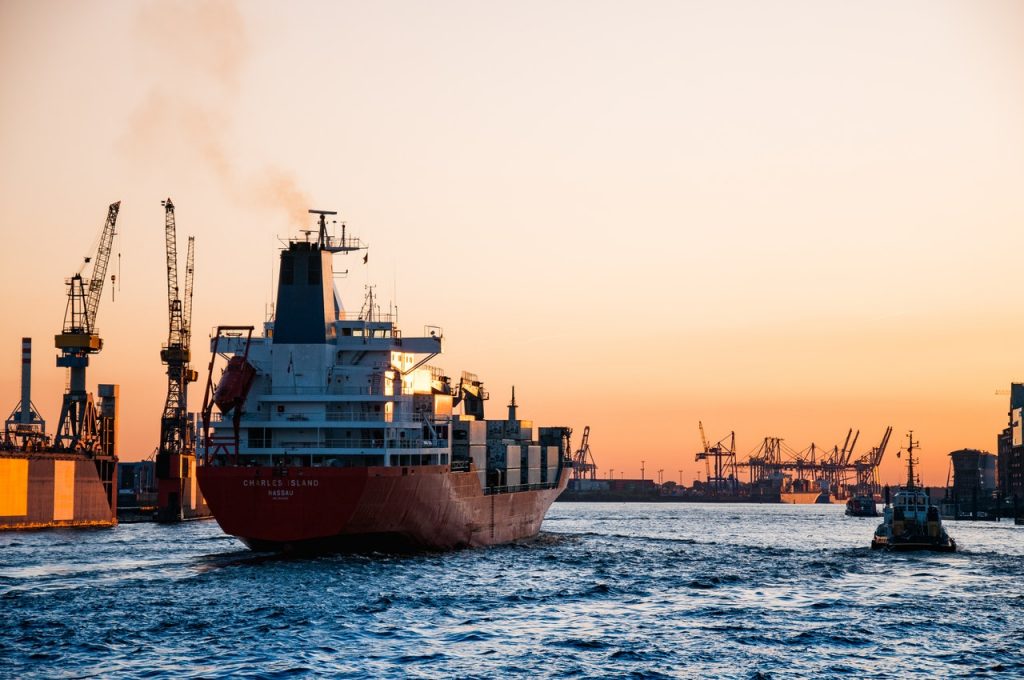
Piracy
With the sheer size of the ships and the large amount of goods being transported per ship, piracy is one of the main issues affecting shipping worldwide. This is also one of the concerns that has arisen out of the Suez Canal blockage as many vessels have opted to use an alternative longer route around the Cape of Good Hope in Africa. This diversion will add weeks on to their journeys and will leave them extremely vulnerable to pirates.
While shipping is still efficient, it does operate on known routes and, with a large amount of valuable cargo, is very enticing for pirates. There is also very weak law enforcement on the seas which is exacerbated by how difficult it is to govern and police open, international waters.
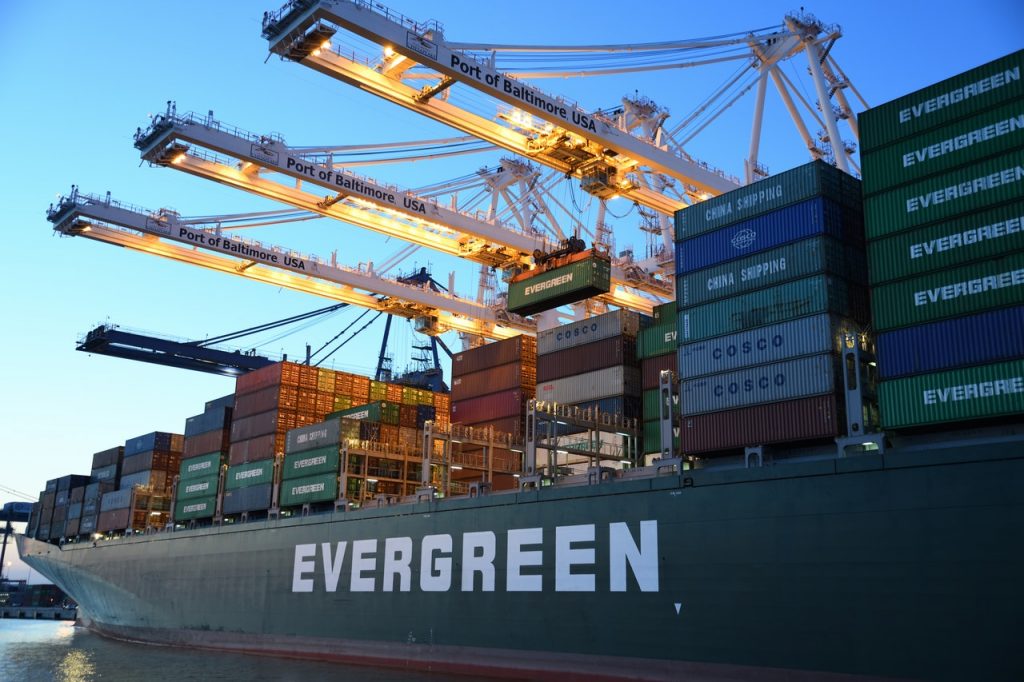
Conclusion
The current global system we live in is only possible through the creation and standardisation of the container and the rapid increase in shipping over the last century. Globalisation is facilitated by the movement of these ships and without them we wouldn’t have a lot of the things we own today…at least not at such a low price.
The situation with the Ever Given cargo ship is very interesting as it shed some light on an industry that is critical to our current way of life but is not widely known to the general public. It is mainly only spoken about in relation to a negative or dangerous event such as this or when ships get highjacked by pirates and bandits.
As the ship is re-floated and international trade is able to resume its regularly scheduled program, the effects of this event will be felt for the rest of the year and will result in many countries and businesses rethinking their global trading strategy for the coming months.
Boskov, Tatjana, and Lazaroski, Spire (2011) Globalization, trade, and business. In: Proc. of the Fourth International Scientific Conference on “Economic & Social Challenges 2011, Globalization and Sustainable Development”, Tirana, Albania.
Ducruet, C. and Notteboom, T. (2012). The worldwide maritime network of container shipping: spatial structure and regional dynamics. Global Networks, 12(3), pp.395-423.
Grossmann, H., Otto, A., Stiller, S. and Wedemeier, J. (2007). Growth Potential for Maritime Trade and Ports in Europe. Intereconomics, 42(4), pp.226-232.
Harvey, D. (1978). The urban process under capitalism: a framework for analysis. International Journal of Urban and Regional Research, 2(1-3), pp.101-131.
Harvey, D., (2001). Globalization and the “spatial fix”. Geographic review, pp.23-30.
Hsu, W. (2012). Ports’ service attributes for ship navigation safety. Safety Science, 50(2), pp.244-252.
Massey, D. (2001). Geography on the agenda1. Progress in Human Geography, 25(1), pp.5-17.
Massey, D. (2004). Geographies of responsibility. Geografiska Annaler: Series B, Human Geography, 86(1), pp.5-18.
Notteboom, T., Parola, F., Satta, G. and Pallis, A., 2017. The relationship between port choice and terminal involvement of alliance members in container shipping. Journal of Transport Geography, 64, pp.158-173.
Peters, K. (2016). Oceans and seas: physical geography. International Encyclopedia of Geography: People, the Earth, Environment and Technology, pp.1-5.
Rodrigue, J. and Notteboom, T. (2008). The geography of containerization: half a century of revolution, adaptation and diffusion. GeoJournal, 74(1), pp.1-5.
Swyngedouw, E. (2004). Globalisation or ‘glocalisation’? Networks, territories and rescaling. Cambridge Review of International Affairs, 17(1), pp.25-48.
